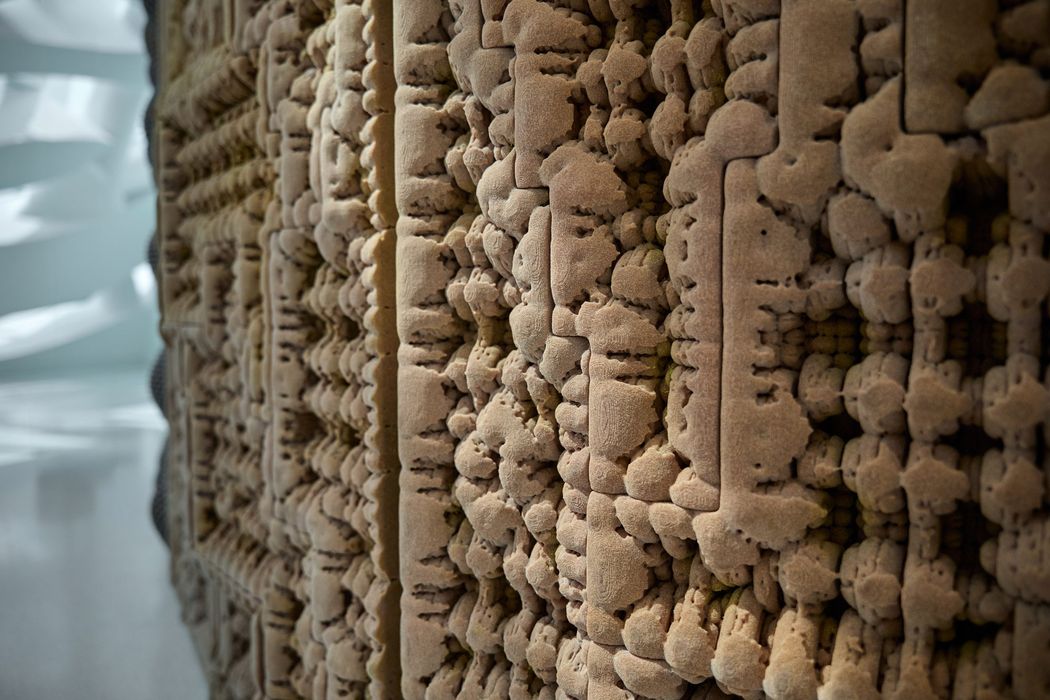
This week’s selection is the Nadarra Wall by architect Barry Wark.
The Nadarra wall was constructed back in 2022, and is now part of the permanent collection of Dubai’s Museum of the Future. Now it’s getting a lot more attention as it has been shortlisted for the 2024 Dezeen Awards.
The 3D printed wall is nominated in the Surface Design category, where it will compete against other worthy designs made worldwide. The awards will be selected and presented late next month.

The Nadarra Wall is indeed 3D printed. Wark used generative AI software to create the highly intricate design.
Wark told Dezeen about the design:
“The project explores qualities of ambiguity in form, texture and material that operate between the natural and the artifactual, attempting to highlight that these categories may no longer be so easily defined.”
How was the wall 3D printed? It’s made from sand, a highly appropriate material for a project in Dubai, and one that represents the notion of using in-situ materials for projects.
The wall was 3D printed in segments, which where then joined together to produce the wall. The initial presentation was smaller, but when added to the museum’s permanent collection it was expanded by printing and joining more segments.

The 3D printing was undertaken by Sandhelden, the German sand printing specialists. The company has produced countless sand designs and artwork using their large format equipment. Their process is a form of binder jet 3D printing, where droplets of binder are selectively deposited on a flat bed of fine sand. Layer by layer, the object is built up and then extracted from the sand when complete.
Sandhelden has appeared in or Design of the Week feature several times previously, including a 3D printed bathtub, the Meristem Wall, and most recently, “Fieldstone”.
Evidently Sandhelden has become very popular among large format 3D designers.
Via Dezeen (story) and Dezeen (shortlist)
